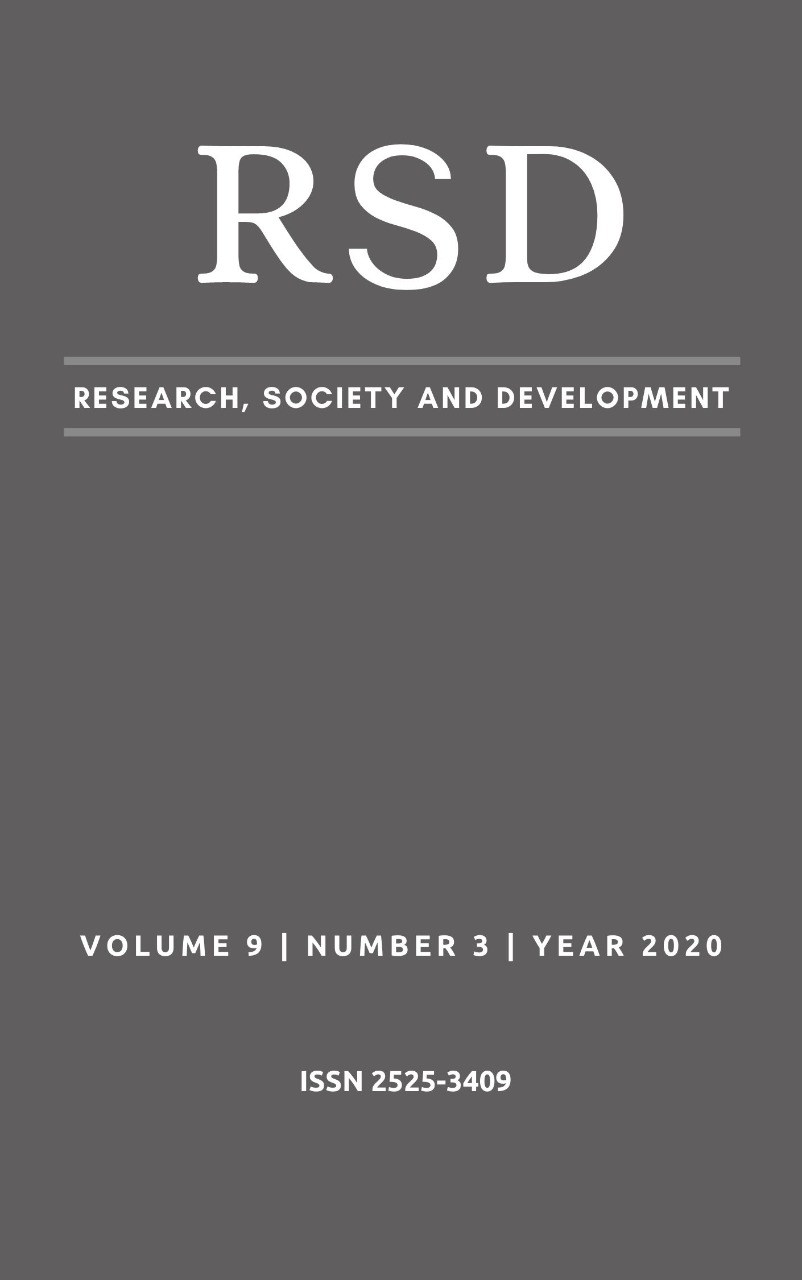Resiliência em fragmento perturbado no bioma Cerrado
DOI:
https://doi.org/10.33448/rsd-v9i3.2351Palavras-chave:
Área degradada, Cerrado-pantanal, Recuperação, Regeneração natural.Resumo
A pressão exercida sobre o cerrado devido à fragmentação florestal tem causado preocupação quanto à capacidade de regeneração dessas áreas. As áreas de mata ciliar devido à proximidade ao curso hídrico, são prioritárias quanto a conservação e muitas das vezes apresentam seus fragmentos perturbados. Nesse sentido, o objetivo desse estudo foi avaliar o potencial de regeneração natural de um córrego com sua mata ciliar perturbada, circundada por pastagens. O método escolhido para demarcação de parcelas foi aleatório simples, composto por 6 parcelas de 10 m x 15 m. Realizamos o inventário florestal no interior de cada parcela, inserindo todas as árvores que possuíam circunferência altura do peito maior ou igual a 15 cm. Foram amostrados 63 indivíduos pertencentes a 10 famílias, distribuídos em 18 espécies diferentes. A maior representatividade está presente na família Fabaceae. Quanto ao grupo ecológico, 61% corresponde as espécies pioneiras, 33% às espécies secundárias e somente uma espécie foi classificada como espécie clímax. Quanto ao índice de Shannon-Weaver, apresentou baixa diversidade florística (1,67 nats.indivíduos-1). As duas espécies com maior índice de valor de importância foram o ipê amarelo (Tabebuia ochracea) e pau terra (Qualea grandiflora), espécies secundárias com valores de 65,87 e 41,44 respectivamente. A mata ciliar perturbada indica um processo de recuperação lento e incipiente principalmente nas áreas abertas e próximas às bordaduras. A área estudada apresenta potencial para regeneração natural e proximidade com fragmentos de boa qualidade, porém é necessário plantio de enriquecimento com espécies florestais secundárias, de forma a acelerar o processo de recuperação.
Referências
Botelho, S. A., Faria, J. M. R., Furtini Neto, A. E., & Resende, Á. V. (2001). Implantação de florestas de proteção. Lavras: UFLA/FAEPE.
Corrêa, R. S. (1998). Ecologia e recuperação de áreas degradadas no cerrado. Paralelo 15.
Dias-Filho, M. B. (2006). Competição e sucessão vegetal em pastagens. Embrapa Amazônia Oriental-Documentos (INFOTECA-E).
Fernandes, M. M., Andrade, G. K. O., Ferreira, R. A., da Silva, T. R., Souza, I. B. A., & Magalhães, J. S. (2018). Regeneração natural em área de reflorestamento misto com espécies nativas no município de Laranjeiras, SE. Revista de Ciências Agrárias Amazonian Journal of Agricultural and Environmental Sciences, 61.
Kunz, S. H., & Martins, S. V. (2013). Regeneração natural de floresta estacional semidecidual em diferentes estágios sucessionais (Zona da Mata, MG, Brasil). Floresta, 44(1), 111-124.
Reis, S. A. D. (2018). Morfometria de Handroanthus ochraceus e Tabebuia aurea e regeneração natural da vegetação lenhosa em cerrado sensu stricto.
Rodrigues, R. R. (2007). High diversity forest restoration in degraded areas: methods and projects in Brazil. Nova Publishers.
Sampaio, A. B. (2006). Restauraçâo de florestas estacionáis deciduais de terrenos planos no norte do vao do Rio Parana, GO. Universidade de Brasília, Brasília-DF.
Downloads
Publicado
Edição
Seção
Licença
Autores que publicam nesta revista concordam com os seguintes termos:
1) Autores mantém os direitos autorais e concedem à revista o direito de primeira publicação, com o trabalho simultaneamente licenciado sob a Licença Creative Commons Attribution que permite o compartilhamento do trabalho com reconhecimento da autoria e publicação inicial nesta revista.
2) Autores têm autorização para assumir contratos adicionais separadamente, para distribuição não-exclusiva da versão do trabalho publicada nesta revista (ex.: publicar em repositório institucional ou como capítulo de livro), com reconhecimento de autoria e publicação inicial nesta revista.
3) Autores têm permissão e são estimulados a publicar e distribuir seu trabalho online (ex.: em repositórios institucionais ou na sua página pessoal) a qualquer ponto antes ou durante o processo editorial, já que isso pode gerar alterações produtivas, bem como aumentar o impacto e a citação do trabalho publicado.


